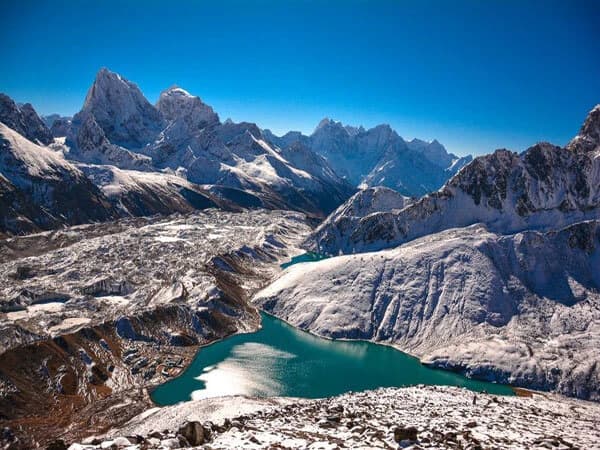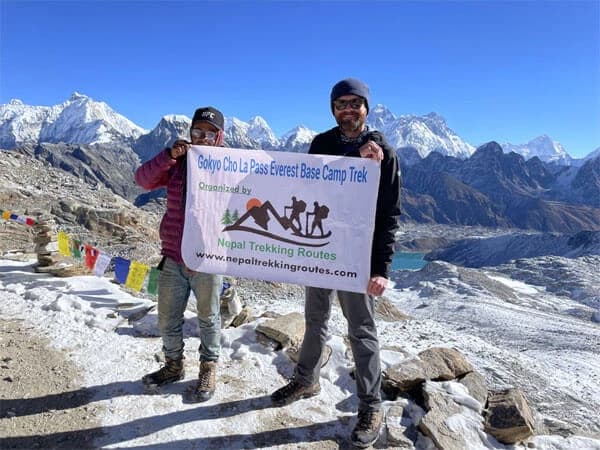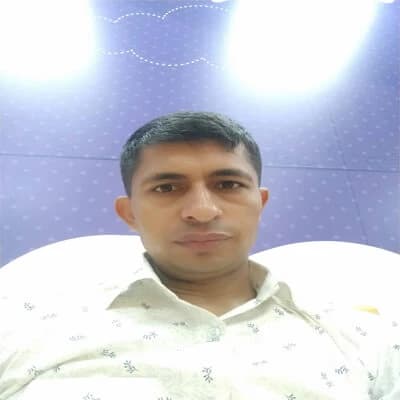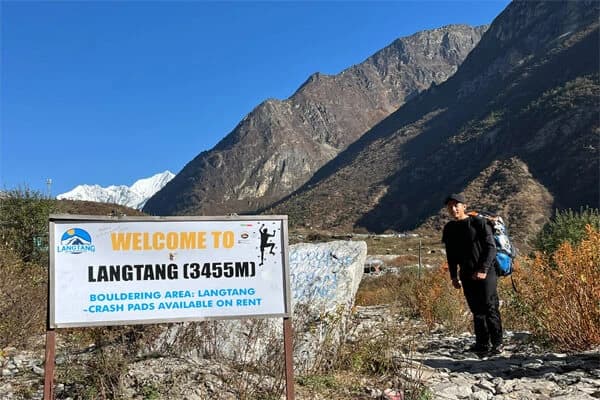Autumn and spring are the best seasons for Gokyo Cho La Pass EBC Trek. In spring, the trails come alive with blooming rhododendrons and crystal-clear mountain views, while autumn offers stable weather, crisp skies, and breathtaking panoramas of Everest, Lhotse, Makalu, and Cho Oyu. These periods provide the most favorable conditions for crossing the high-altitude Cho La Pass (5,420 m) and exploring both Gokyo Lakes and Everest Base Camp. Trekking during these months ensures safer paths, excellent visibility, and an unforgettable Himalayan experience.
Gokyo Cho La Pass Trek is ideal if you want to see large snow-capped mountains while hiking in the Himalayas. However, it is crucial to know when it is best to go before you go. In the highlands, the weather is always shifting. There are times when it rains a lot and times when it is quite chilly. Therefore, choosing the appropriate season allows you to take in the scenery, walk safely, and avoid bad weather.
We shall discuss the four seasons in this Gokyo trek season guide: spring, summer (monsoon), autumn, and winter. We will describe the seasonal variations in weather and how they may affect the difficulty of the trek. We will also discuss which time of year offers the best views of the mountains, pleasant sunshine, and dry pathways. This blog will assist you in selecting the ideal time to go on your adventure.
We also discuss how our company, Nepal Trekking Routes can assist you in scheduling your trip during the most favorable time of year. We are knowledgeable about the trek and are local specialists. We can guarantee a pleasurable and safe excursion. Let us prepare for an amazing mountain experience by learning more about the best time for Gokyo Cho La Pass Trek!
Gokyo Cho La Pass Trek Overview
One of the most thrilling and stunning treks in Nepal Everest region is the Gokyo Cho La Pass Trek. You see both Everest Base Camp and Gokyo Valley on this unique adventure. You will pass over the high Cho La Pass (5,420 meters) and observe serene lakes and towering snow-capped mountains along the route. For those seeking excitement, peaceful surroundings, and vistas of some of the highest peaks in the world, including Mount Everest, Lhotse, Makalu, and Cho Oyu, this trek is ideal.
It typically takes 16 to 18 days to complete the trek. From Kathmandu, it begins with a quick flight to Lukla. From there, you traverse rivers, forests, and tiny Sherpa communities. You will make stops in Gokyo, Dole, and Namche Bazaar. For breathtaking views of the Gokyo Lakes and mountains, trek up Gokyo Ri while in Gokyo. You then go to Everest Base Camp and the well-known vista Kala Patthar after traversing the treacherous and freezing Cho La Pass.
Cho La Pass and the high elevation make this walk more challenging than the standard Everest Base Camp trekking route. To be safe, you must walk gently and be in good physical condition. This trek is best done in the spring (March to May) or autumn (September to November), when the weather is pleasant and the skies are clear.
Gokyo Cho La Pass EBC Trek: Seasonal Overview
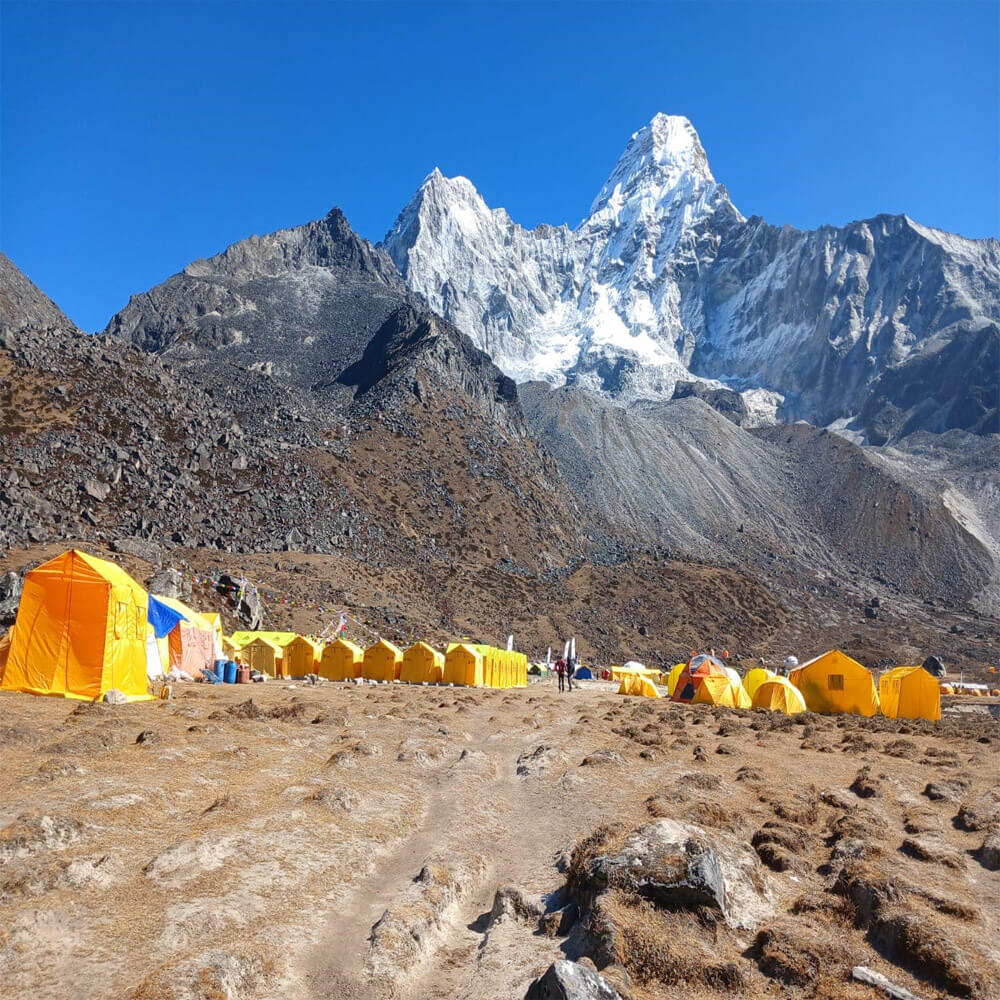
The Gokyo Cho La Pass EBC Trek is a lengthy and stunning journey through Nepal's Himalayas. The renowned Everest Base Camp, the high Cho La mountain pass, and the blue lakes of Gokyo are just a few of the breathtaking locations you will encounter on this trek. Along the trip, you pass through little communities, cross rivers, and trek across large mountains. However, because the climb is lengthy and extremely high, choosing the appropriate time of year to go is crucial.
Seasons have a significant impact on the Weather in Everest region. It can be clear and sunny at times. It can get cold and snowy at times. Occasionally, heavy rain causes the trails to become slippery. Therefore, being aware of the various seasons will assist you in selecting the most suitable and secure time for the trek.
In Nepal, there are four distinct seasons:
- Spring (March, April, May)
- Summer/Monsoon (June, July, August)
- Autumn (September, October, November)
- Winter (December, January, February)
The ideal seasons for the trek are autumn and spring. For the most part, the weather is sunny and clear. The mountains are clearly visible. Along the trail, flowers will also be in blossom in the spring. Autumn offers the best views of the mountains and beautiful blue skies.
It rains a lot during the monsoon season. It is difficult to view the mountains because of the clouds. The paths get hazardous and muddy. Additionally, landslides are a possibility. Trekking is therefore not recommended during this time of year.
The trail has snow and is extremely cold in the winter. Snow can cause the Cho La Pass to close. Walking becomes dangerous and challenging. In winter, only experienced trekkers should go.
Therefore, it is wise to go in the spring or autumn if you are planning the Gokyo Cho La PassEBC Trek. Better vistas, pleasant weather, and a safer trip are all in store for you. Before you leave, always check the weather and with your guide.
Gokyo Cho La Pass EBC Trek in Spring Season (March to May)
One of the greatest seasons to complete the Gokyo Cho La Pass Everest Base Camp Trek is in the spring. The sky is clear, the weather is pleasant, and the mountain views are breathtaking in the spring. Nepal is so gorgeous that many people travel there to trek in the spring from all over the world.
Sunny and warm outside.
The days are warm and sunny from March to May. Neither too hot nor too chilly. Walking becomes more enjoyable and easier as a result. Even at night, it can get a little chilly, particularly in high altitude locations like Cho La Pass or Gokyo Ri. However, you will be alright if you have a decent sleeping bag and warm clothes. On most days, you will not have to worry about rain or snow because the weather is primarily dry.
Visibility and views during Gokyo Chola Pass EBC trek
In the spring, the sky is frequently exceptionally clear. This indicates that you have a clear view of the large mountains, including Ama Dablam, Lhotse, Cho Oyu, and Mount Everest. The snow-covered summits make for stunning photographs. The air seems clean and fresh in the morning, and the sunrise is stunning.
Beautiful Flowers on the Way
The trails are a riot of color in the spring. The national flower of Nepal, rhododendron trees, blooms in shades of pink, white, and red. The woods resemble a garden. The experience of walking through them is enchanting. Along the walk, you will also spot small animals and birds. The springtime brings a sense of vitality to nature.
A Good Time for Beginners
Those walking in the Everest region for the first time might do well in the spring. You do not have to cope with a lot of rain or snow because of the pleasant weather. You can walk more safely as a result. The Cho La Pass is still rather high, though, and can be challenging to traverse. Therefore, it is best to follow a guide, particularly if you are a beginner.
Meet People from All Over the World
The trail is crowded with amiable faces because so many trekkers visit Nepal in the spring. You can hear tales from folks who have been far away and meet new people. The lodgings, or tea houses, are open and crowded. In the evenings, you can sit by the fire and savor hot beverages and warm cuisine. It depends on your preferences; some trekkers like peaceful trails, while others prefer the crowds.
The Gokyo and Everest region is very beautiful in the spring. The walk feels extra special in the spring when there is plenty of energy in the air, gorgeous scenery, vibrant flowers, and pleasant weather. It is wise to go in the spring if you want a joyful and lovely vacation.
Gokyo Cho La Pass EBC Trek in Autumn Season (September to November)
One of the greatest seasons to complete the Gokyo Cho La Pass Everest Base Camp trip is in the autumn. During this time, a lot of tourists travel from all over the world to Nepal to enjoy the stunning mountain views, clear skies, and refreshing temperature at Gokyo and EBCs. Let us examine why this walk is so enjoyable in the autumn.
Clear Skies and Big Mountain Views
The skies are clear in the autumn. Neither snow nor rain is falling heavily. This implies that the towering white mountains are visible virtually every day. Mount Everest, Ama Dablam, Lhotse, Cho Oyu, and numerous more mountains appear stunning. The vistas are ideal for appreciating nature and shooting pictures.
The sun occasionally rises gently over the snow-capped mountains when you are out for a morning stroll. The sky turns pink and orange. I feel as though I am dreaming! Many individuals decide to trek in the autumn because of these views.
Comfortable Climate conditions for Gokyo Cho La Pass EBC trek
Autumn weather is neither too hot nor too cold. Walking is easy and enjoyable during the day because of the warm sun. Though not as frigid as in the winter, it can get chilly at night, particularly in high elevations like Gokyo Ri or Cho La Pass.
The paths are dry and safe due to the favorable weather. It is easy to walk because there is no snow or slippery mud. You may relax, soak in the scenery, and not be overly concerned about danger.
Crowd levels on Gokyo EBC trekking trail
Since autumn is the busiest time of year, there will be a lot of trekkers on the trail. This appeals to some people since walking with others is enjoyable. You have the opportunity to meet people from other nations and form new friendships.
The tea houses, which are little mountain hotels, are open and bustling. The cooks have prepared hot dishes including steaming soup, noodles, and dal bhat. At night, you can converse with other trekkers and share your experiences while sitting around a fire.
However, keep in mind that you should make reservations in advance because this is a popular season. Waiting too long could result in you not receiving a guide or a room. You can make timely reservations with the aid of our trekking organization, Nepal Trekking Routes.
Enjoy Festivals and Culture
In Nepal, major celebrations like Dashain and Tihar take place in the autumn. In Nepali households, they are highly joyous occasions. People may be performing music, flying kites, or decorating their homes with flowers and vibrant lights.
You might be fortunate enough to witness these festivities while trekking. You can sample regional cuisine, discover more about Nepali culture, and perhaps even participate in a festival dance!
The Gokyo Cho La Pass EBC trek is most enjoyable in autumn. The mountains appear stunning, the skies are clear, and the weather is pleasant. Autumn is the ideal time of year to go if you want to enjoy this trek without any rain or snow.
Gokyo Cho La Pass EBC Trek in Winter Season
It can get extremely chilly during the winter months when trekking over Gokyo and Cho La Pass to reach Everest Base Camp. This takes place between December and February. The trek is more challenging because of the cold, despite the clear, blue skies. However, winter can be an enjoyable season if you enjoy peaceful routes and do not mind snow.
How is the weather during the Gokyo Chola Pass EBC trek in Wenter?
The weather is dry yet extremely cold during the winter. It is frigid in the mornings and evenings. In the higher regions, nighttime lows can go below -20°C (minus 20 degrees Celsius). Although it is slightly milder during the day due to the sun, it is still quite cold. Cho La and other high passes frequently receive snowfall. The trail may become difficult to walk on due to the snow.
Cho La Pass Can Be Risky during the Winter season
Crossing the Cho La Pass is one of the more challenging aspects of this journey. During the winter, snow and ice cover the pass. Slipping is a possibility, and it can be difficult to perceive the way. Too much snow can sometimes force Cho La Pass to close. This implies that trekkers might have to wait for the weather to improve or alter their itinerary.
Good for Experienced Trekkers
For those with some prior trekking experience, winter trekking in Nepal is ideal. You will feel more at ease if you have previously walked on slippery or snowy paths. Additionally, you ought to accompany a guide who is familiar with the path. You can choose the finest route each day and stay safe with the assistance of a guide from Nepal Trekking Routes.
What to Pack for Winter
It is crucial to pack appropriately for the winter months. Warm sleeping bags, heavy jackets, caps, gloves, thermal underwear, and high-quality trekking boots are all necessary. If it snows, wearing waterproof clothing will also be beneficial. To ensure you do not forget anything, Nepal Trekking Routes provides useful packing lists.
Fewer Trekkers on the Trail
Trekking in the winter has the advantage of being incredibly silent. Trekking is not popular during this time of year. This implies that you can take pleasure in serene walkways and deserted tea places. You have more time to take in the crowd-free views of snow-capped mountains.
Flights May Be Delayed
Delays or cancellations of flights to Lukla may occur due to fog or snow. It is advisable to factor in additional days in case of weather-related issues. During the winter, it is preferable to have a flexible schedule.
The Gokyo Cho La Pass Everest Base Camp trail is challenging but serene in the winter. With snow everywhere, the views are breathtaking. This can be a unique time to visit if you enjoy peaceful trails and do not mind the cold. However, it is crucial to use caution and follow a guide.
Gokyo Cho La Pass EBC Trek in Monsoon Season (June to August)
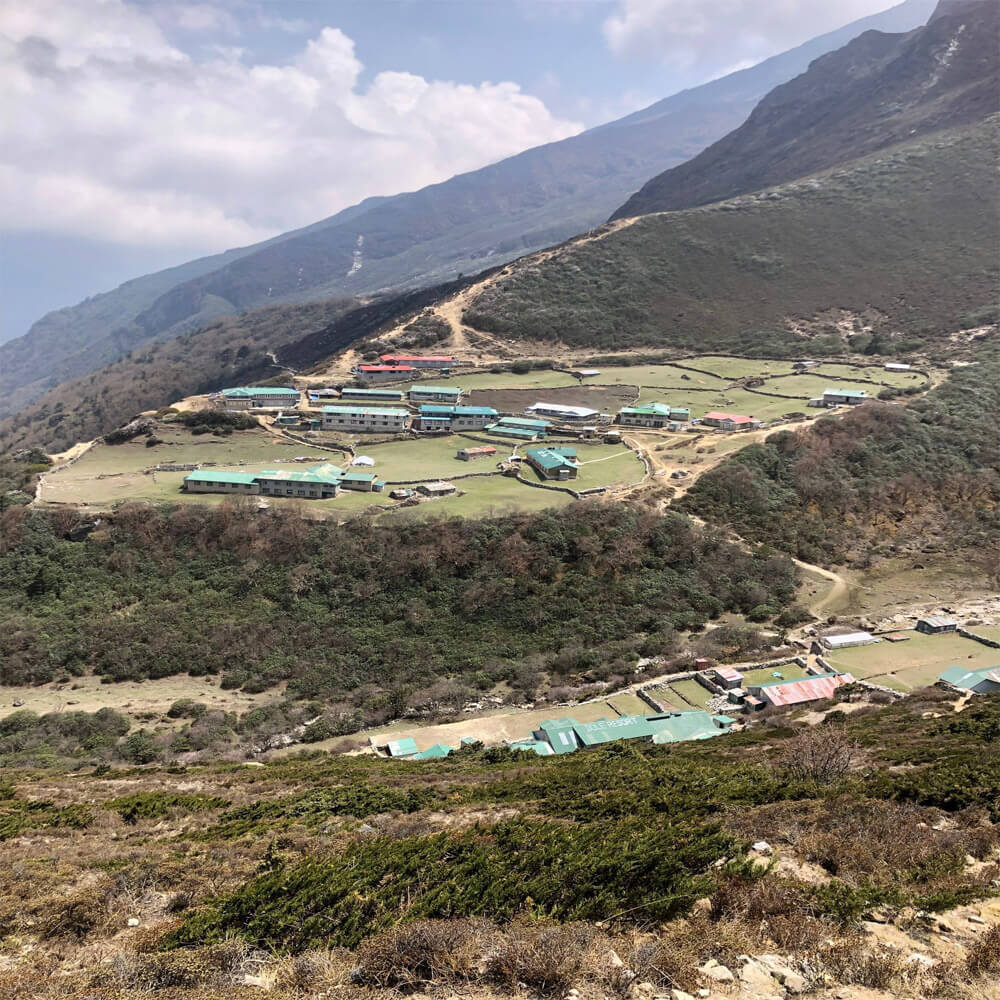
It might be extremely challenging to trek to Gokyo, Cho La Pass, and Everest Base Camp during the monsoon season. It will rain a lot during the monsoon. The rainy season in Nepal typically lasts from June to August. It rains nearly every day during this time, the trails are muddy, and the sky is overcast.
What are the Monsoon season trekking risks?
Let us examine what trekking is like in this time of year.
Heavy Rainfall
The mountains receive a lot of rain during the monsoon season. Rain occasionally falls in the morning. It can rain all day at times. The walking trails become extremely slippery due to the rain. It is simple to trip and fall or sustain injuries. Walking requires extreme caution. The large mountains are likewise difficult to discern in the rain. The sky is cloudy most of the time. Therefore, it is not the ideal moment to see Gokyo Lakes or Mount Everest in their entirety.
Muddy and Slippery Trails
The paths you walk on get muddy and damp after a rainstorm. The mud may get your shoes trapped. If you are not careful, you can even slip and fall. There are a lot of rocks in some places, and they can get slippery. It will be necessary for you to wear high-quality shoes with exceptional traction.
Additionally, during the rainy season, rivers and waterfalls grow larger and more powerful. There may be damage to some bridges. In some areas, you may need to move extra cautiously.
Risk of Landslides
The soil becomes weak due to rainwater. Heavy rain can result in landslides in Nepal's mountainous and hilly regions. A landslide occurs when mud and rocks tumble down from the slopes onto the roads or pathways. Trekking becomes dangerous when landslides obstruct the trails. For this reason, a lot of people steer clear of trekking during this time of year.
Leech Trouble
During the monsoon season, tiny insects known as leeches emerge. Wet, muddy places are home to leeches. When you walk, they can stick to your legs. They are not really painful, but they can be bothersome. To keep them away, use salt or spray and wear long socks.
Flight Delays and Road Problems
The weather can be a major issue if you intend to begin the journey by flying from Kathmandu to Lukla. Rain and clouds cause a lot of flights to be delayed or even canceled. Additionally, landslides can block roads. As a result, you could have to wait for several hours or days if your plan changes suddenly.
Not the Best Time for Beginners
First-time trekkers should avoid the monsoon season due to the numerous issues rain, slippery trails, leeches, and delays. Even seasoned trekkers favor different seasons, such as spring or autumn. You need to pack the appropriate equipment, walk with a guide, and be extremely well-prepared if you still wish to attend.
Trekking to Gokyo, Cho La Pass, and Everest Base Camp is riskier, wetter, and more challenging during the monsoon season. For a safer and more enjoyable walk, it is preferable to select a dry season.
Which Season Is Best for You?
Selecting the ideal time to trek to Everest Base Camp via Gokyo Cho La Pass is crucial. In the highlands, the weather fluctuates quickly. To stay safe and have fun on your walk, you must choose the appropriate season.
The Ideal months for Everest trekking are in the spring, from March to May. Usually, the sky is clear. Tall mountains like Ama Dablam, Lhotse, and Everest are visible. The forest's blooming rhododendrons give the trail a vibrant appearance. It is not too hot or too cold outside. Because everything appears so lovely, many people like trekking in the spring.
For unobstructed views of the mountains, autumn (September to November) is the ideal season. The air is clear and fresh after the summer rains have stopped. The routes are dry and the days are sunny. If you want to snap stunning pictures, now is the ideal time of year. Even when the nights grow colder, tea houses are still a good place to sleep. The greatest season, according to many trekkers, is autumn.
Winter (December to February) can be for you if you enjoy cold weather and fewer people. However, keep in mind that the Cho La Pass may close due to snow accumulation. You need a guide and warm clothing for the more difficult trek.
For trekking, the monsoon season (June to August) is not ideal. Rainfall is heavy. Trails become slippery and muddy. Clouds may prevent you from seeing the mountains. Additionally, landslides are a possibility.
Which season is the best, then? Spring or autumn are the most popular choices. The finest views, safer pathways, and the best weather occur during these seasons. The safest and most enjoyable seasons to go trekking are spring or autumn if you are new to the sport.
Spring vs Autumn for EBC Gokyo Trek
Although they seem a little different, spring (March to May) and autumn (September to November) are both excellent seasons to complete the Everest Base Camp Gokyo Trek.
Life is abundant in the spring. The rhododendron flowers are in bloom along the pathways, and the weather has warmed up. In addition to seeing vibrant woodlands, you might perhaps spot some wildlife. Although there may be some clouds in the afternoon, the sky are often clear in the morning. If you enjoy bright colors and the outdoors, this is a terrific time.
Trekking is most popular in the autumn. The skies are clear nearly every day, and the weather is dry and cool. It is easier to see Everest and the neighboring peaks, and the vistas of the mountains are breathtaking. The walkways are in good shape, and the air is clean after the summer rain.
You will love the flowering flowers and the warmer days of spring. You will experience milder temperatures and the best vistas of the mountains in the autumn. It is safe and fun in both seasons.
We will assist you in making a decision depending on your travel schedule, interests, and time if you are unsure which one to pick. Our Company will ensure that you have the finest possible EBC Gokyo trek.
Conclusion: Best Season for Gokyo Cho La Pass EBC Trek
It is crucial to pick the ideal time of year for the Gokyo Cho La Pass Everest Base Camp Trek. It keeps you safe and increases your enjoyment of the trek. The ideal seasons are spring (March to May) and autumn (September to November). The weather is pleasant, the skies are clear, and the views of the mountains are breathtaking throughout these months. Along the route, you can meet other contented trekkers, and the pathways are also easier to stroll.
It will be extremely chilly and snowy if you visit during the winter. Perhaps the Cho La Pass is closed. Rainfall is heavy during the summer (monsoon), and the trails may become slippery and soggy. For this reason, most people steer clear of trekking at this time.
Our Company, Nepal Trekking Routes can assist you with organizing your trip during the ideal time of year. We will lead you and ensure a safe and enjoyable journey.
Some of Frequently Asked Question
What is High pass trekking season in Nepal?
In Nepal, spring (March–May) and autumn (September–November) are the ideal times of year for high pass trekking because of the dry weather, bright skies, and safe mountain trails.
How is the Trail condition during different seasons?
In Nepal, trail conditions change with the seasons. Paths are stable and dry in the spring and autumn. The summer (monsoon) season offers muddy, slippery routes, and the winter months can bring icy, snow-covered areas at high elevations.
What are the Safe trekking months for Cho La Pass?
March through May and late September through November are the safest times of year to traverse Cho La Pass. The paths are dry and simpler to traverse during these periods, and the weather is clear.
What are the Altitude and weather challenges of Gokyo cho la pass trek?
The air is thin at 5,400 meters on the Gokyo Cho La Pass trek. Strong winds, snow, and frigid temperatures can all make walking more challenging. The weather can change quickly.




